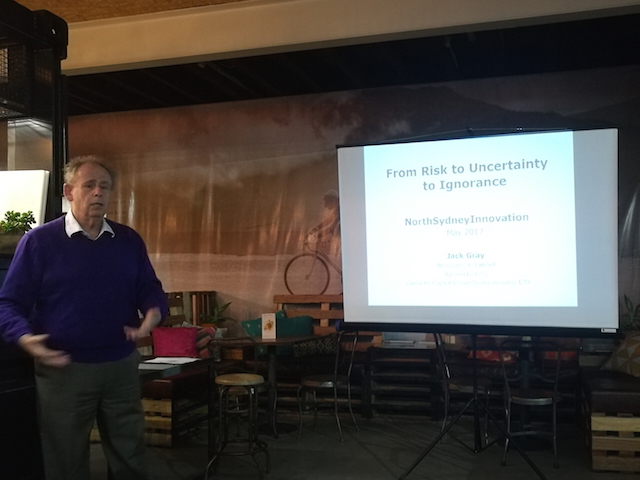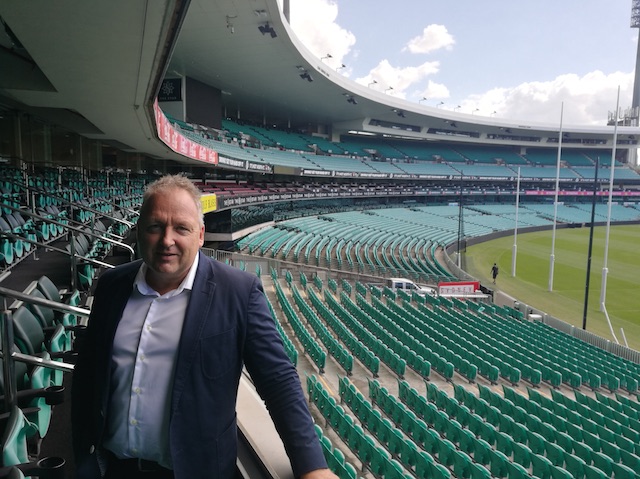“We discount uncertainty and ignorance too much,” says funds manager Jack Cray.
Cray was giving his From Risk to Uncertainty to Ignorance presentation at Sydney’s North Shore Innovation Network where he went through some of the lessons from a career of managing funds in North America and Australia.
Groupthink is one the great risks Cray sees in the investment community with funds managers tending to recruit from a monoculture drawn from economics and finance degrees. “Diversity amplifies signals,” says Cray.
Compounding the groupthink is the focus on risk, believes Cray. Risk can be managed while the other factors in investment – uncertainty and ignorance – can’t.
Traditional investors, particularly those in the public equity markets, understand risk well. However those established models also mean create process driven risk averse institutions.
In the Uncertainty field, typified by the private equity markets, fixed models don’t work so well as a consequence investors have to be more risk tolerant and patient as they deal with a world where things can’t be assumed.
And then there is the world of ignorance where no-one can quite be certain of what’s going on, which is typical of the tech startup field. In this space, investors have a high risk tolerance and are often muddling through while being buffeted by unexpected factors.
“To succeed in a world of ignorance you have to be honery and less concerned about certainty,” Cray observes with a wry smile.
This explanation makes a lot of sense when looking at why institutional investors struggle with the startup world and why private equity investors – largely a group of financial pirates – are so profitable.
In answer to my question that saying startup investors are operating in a world of ignorance implies that sector really is an insider game, Cray was ambivalent – it can be, but the endorsement of a major VC or highly regarded investor will by its nature be seen as information in a field where everyone is short of data.
Cray also had an interesting perspective on how markets and pundits see change differently, “investors overlook while futurists overcook.”
Speaking to Cray after the event, he had some thoughts about the internet itself, while it’s a great source of information it also creates too much noise. Cutting out that noise is essential for a good investor.
When it comes to investment all of us are dealing with different degrees of ignorance, Jack Cray’s views were an interesting insight into how managing a stock portfolio or picking ventures is more than just understanding risk.




